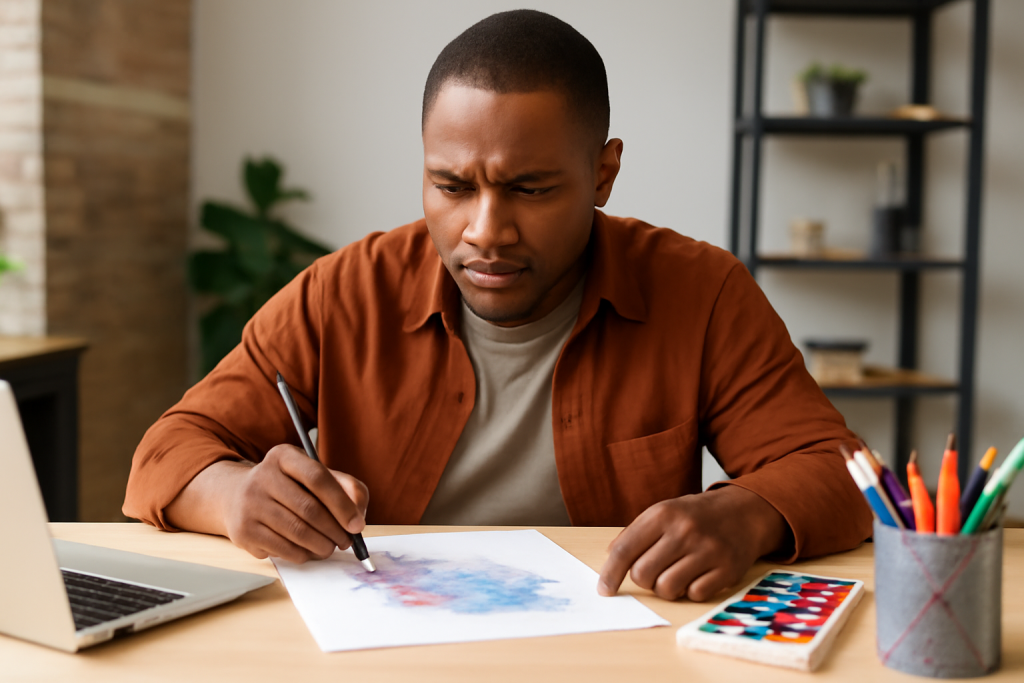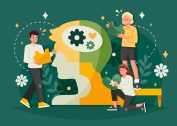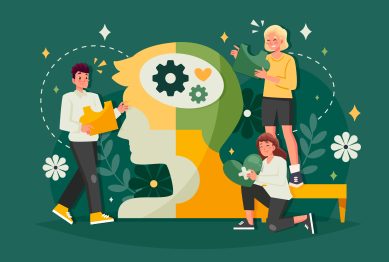Creativity isn’t always a smooth path. As much as we would like to embrace constant inspiration, it’s natural for creative energy to ebb and flow. Whether you’re an entrepreneur, writer, designer, or any other creative professional, setbacks are inevitable. The key to long-term success lies in how we deal with these challenges, bounce back, and continue to innovate. In this article, we’ll explore how to stay creative when facing setbacks by focusing on emerging trends, research-backed strategies, and practical tips for overcoming creative blocks.

Why Setbacks Affect Creativity
Before diving into how to stay creative, it’s essential to understand why setbacks can hinder creativity. When faced with challenges—be it a failed project, rejection, or personal struggles—our mindset tends to shift toward negativity. The feeling of failure often results in self-doubt and stress, which can block the creative process. According to psychologist Dr. Shelley Carson, creativity is deeply linked to emotional regulation. Setbacks can disturb this regulation, causing a person to focus on the negative aspects rather than opportunities for growth .
However, setbacks don’t have to be permanent roadblocks. By learning how to navigate these moments, we can regain our creative flow.
Embrace a Growth Mindset
One of the most powerful ways to stay creative during setbacks is to cultivate a growth mindset. A growth mindset is the belief that abilities and intelligence can be developed with effort, learning, and persistence. This mindset is particularly effective when faced with creative challenges.
Why Growth Mindset Matters
Research by psychologist Carol Dweck shows that people with a growth mindset are more resilient to setbacks and failure. They are more likely to view challenges as opportunities to learn and grow, rather than obstacles. For creatives, adopting this perspective means not being paralyzed by failure but rather using it as a stepping stone to improvement.
In practical terms, this might look like:
- Reflecting on what went wrong, identifying key lessons.
- Setting small, achievable goals to build momentum.
- Emphasizing progress over perfection in creative tasks.
Actionable Steps:
- Focus on Effort: Celebrate the effort, not just the outcome. Every creative endeavor, even if it doesn’t succeed, is a valuable learning experience.
- Challenge Negative Thoughts: Replace thoughts like “I can’t do this” with “I’m learning how to do this.”
- Learn from Criticism: Instead of seeing criticism as a blow to your creativity, view it as constructive feedback that helps you refine your craft.
Build Creative Resilience through Routine
When creativity stalls, a structured routine can be a surprisingly effective tool. It might sound counterintuitive—creativity thrives on freedom, after all—but having a routine helps establish a foundation of consistency that can protect against the unpredictability of setbacks.
The Power of Routine for Creatives
Routine allows the brain to rest in one area and build energy for the next task. According to James Clear, author of Atomic Habits, the power of routine lies in habit formation. Once a task becomes habitual, it no longer requires the same level of mental effort. This means that even on days when motivation is low, the habit of showing up and working will sustain your creativity.
Actionable Steps:
- Time-block Creative Sessions: Dedicate specific hours each day for creative work, ensuring consistency even during rough patches.
- Incorporate Downtime: Balance routine with necessary breaks and relaxation to avoid burnout.
- Set Simple, Tangible Goals: Break larger projects into manageable chunks, making it easier to keep moving forward.
Change Your Environment
When setbacks occur, it’s easy to feel like you’re stuck in a rut. A simple change in environment can be a catalyst for creative renewal. Whether it’s rearranging your workspace or seeking inspiration in a different setting, altering your surroundings can stimulate new ideas and perspectives.
Environmental Triggers for Creativity
Studies have shown that physical spaces significantly influence creativity. A study by the University of Illinois found that workers in environments with a moderate level of distraction (like open spaces or bustling cafes) tend to be more creative compared to those in overly quiet or isolated spaces . The right environment can spark new ideas and offer fresh solutions to creative problems.
Actionable Steps:
- Redesign Your Workspace: A new layout or adding creative elements like plants or art can refresh your thinking.
- Seek Inspiration Outside: Take walks, visit art galleries, or work in different settings to break free from mental constraints.
- Declutter: Remove distractions that don’t contribute to your creative process, and focus only on essentials.
Collaborate and Share Ideas
Creativity doesn’t have to be a solo journey. In fact, collaboration can be a powerful antidote to setbacks. Working with others exposes you to diverse perspectives, helps you see problems in new ways, and can lead to innovative solutions that you might not have discovered alone.
The Role of Collaboration in Boosting Creativity
Collaborating with others brings fresh energy to your work. As noted in a Harvard Business Review article, diverse teams tend to be more creative because different backgrounds and expertise lead to new insights . In times of setback, turning to a trusted peer or collaborator can help you see past your current limitations and rediscover inspiration.
Actionable Steps:
- Share Your Struggles: Don’t be afraid to discuss creative roadblocks with peers. They may offer ideas that trigger new thoughts.
- Attend Workshops or Meetups: Engaging with other creatives in a structured setting can help reignite passion and motivation.
- Join Creative Communities: Online forums, social media groups, and local creative meetups provide spaces to exchange ideas and collaborate.
Leverage Mindfulness and Meditation
Creative blocks often arise from stress, burnout, or overwhelming emotions. Practices like mindfulness and meditation have been shown to reduce anxiety and improve cognitive function, which can help restore creativity.
How Mindfulness Enhances Creativity
Mindfulness—being fully present and aware in the moment—allows individuals to let go of judgment and fear of failure. Studies have shown that mindfulness techniques can boost creativity by enhancing cognitive flexibility and reducing stress, which are both crucial for innovative thinking .
Actionable Steps:
- Daily Meditation Practice: Even just 10-15 minutes per day can help clear your mind and reset your creative energy.
- Mindful Breaks: Take short, mindful breaks throughout the day to refocus and refresh your mind.
- Breathing Techniques: Practice deep breathing exercises to reduce stress and regain mental clarity.
Conclusion
Setbacks are an unavoidable part of any creative journey, but they don’t have to stifle innovation. By embracing a growth mindset, building resilience through routine, changing your environment, collaborating with others, and practicing mindfulness, you can overcome challenges and continue to stay creative. It’s about finding the right strategies that work for you and giving yourself permission to grow through the process. With these strategies in hand, you’ll be better equipped to navigate setbacks and come out stronger on the other side.
Reference
- Change Your Environment, https://news.illinois.edu
- Moderate background noise enhances creativity, https://www.sciencedaily.com
- Leverage the Power of Physical Activity, https://www.theguardian.com









